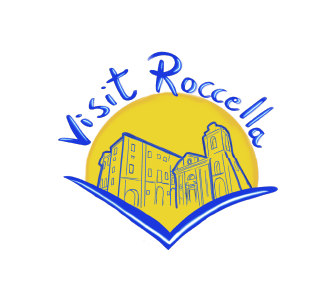translated with AI
In Roccella Jonica, since ancient times, the Reggio family represented the category of carpenters par excellence.
The progenitor of all the Reggios of Roccella was Biase (Blasius, Blasio) Reggio, master carpenter from Serra, who definitively moved to Roccella when he married, on December 1, 1784, Anna Rosa De Angelis, daughter of master Antonino, also from Serra, settling in the Borgo district, near the De Angelis family. As was customary among the artisan class and wealthy families, a strong prerequisite for distinction was to send one of the children to pursue ecclesiastical studies. In the Reggio family, this choice fell to Francesco Saverio Giuseppe, born in 1805, who had as his baptismal godfather none other than D. Francesco Saverio Majorana, Royal Administrator of the Customs of Roccella, appointed directly by the King. For the future priest Francesco Saverio Reggio, another occasion of distinction was reserved from the time he was a simple cleric: he was granted a Temporary Chaplaincy, with the title of S. Maria Addolorata, with episcopal authorization, to officiate a monthly mass at the Church of the Parish of S. Anastasia in the Borgo; for this concession, the Reggio couple reserved the income of 53.23 ducats produced by the properties of the Ferraro and Lacchi districts, as well as their residence “in the place called Botteghelli”, i.e., the stretch of ascent after the Church.
It should be noted that at the beginning of the 1800s, the Reggios lived in a low house with a nearby vegetable garden. With the family’s economic growth over the course of that century, their residence was expanded. Master Biase Reggio was one of the craftsmen highly esteemed by the entire Community, as well as by the municipal authorities who often requested his services. Honor is due to his professionalism by mentioning some circumstances that involved and distinguished him:
1816 – The South was hit by a terrible cholera epidemic. In Roccella, preparations were made for the arrival of the menacing vibrio. With the approval of provincial authorities, health officials, and under the orders of General Nunziante, the University of Roccella built huts outside the town, in the Scogli (probably Pietrosi), Melissari, Pietà, and Barruca districts. Master Biase was involved in the construction of “seven lanterns” for the lighting of the four Lazzarettos.
1817 – Master Biase was salaried throughout the year for taking care and “exercised well his office to make the Municipal clock walk well and accurately” of the bell tower of the Mother Church at the Castle. The activity of controlling the Universal Clock was carried out for many years.
The same esteem was bestowed on Saverio, son of master Biase, also an excellent carpenter. In 1859, Mayor Cappelleri wanted master Saverio Reggio with him, so he was elected as a deputy for public works, for the expertise in the restoration works carried out in the choir of the Mother Church destroyed by a fire.
In 1889, the Municipal administration decided to appoint the two cousins Reggio, Giuseppe son of Saverio, and Salvatore son of Giosuele, as “technicians to assist and verify the public works that the Municipality will build”.
In the years around 1890, the Borgo district underwent a moment of particular attention from the municipal authorities that marked its history.
The first work that gave a cut to social development was the opening of a drivable road, wide and straight, which connected the two large, densely populated districts: the Borgo and the Marina. It was in 1879, such an artery became necessary after the opening of the railway in 1871. For the naming of the new road, an auspicious name was chosen: Via Progresso.
Another great opportunity for civil growth and development was the installation of the first public fountain in Roccella, taking advantage of the nearby pipes that supplied the tanks of the railway station from the Ciurria spring. This fountain was placed next to the Reggio property: its inauguration took place in September 1881. To increase these opportunities for development, the opening of the Bottari Pharmacy was added. It must not be forgotten that everything revolved around the Church of the district. What was missing, however, was a square to provide opportunities for meetings and coexistence among the citizens of Roccella. The authorities did not overlook this need. It was talked about for a long time, until the issue was brought to the Municipal Council. It was May 31, 1893, when the issue of “Piazzetta al Borgo” was addressed. Fortunately, circumstances allowed its resolution: the owners of two existing houses in front of the Church, and on the opposite side of the street, allowed their expropriation. The Municipality expedited all the customary procedures and, with an expense of £500, the much-desired square was built. Over the course of just over a decade, the entire center of the Borgo acquired a new aesthetic and livability, making it the center of social and commercial life in Roccella.
However, there remained a “blemish” that Master Biase Reggio sought to remedy with the support of the municipal authorities. On February 10, 1893, at the first point of the agenda of the Municipal Council meeting, it was written: “Concession of public land to Private individuals”. The topic focused on resolving the “blemish”. The carpenter Reggio submitted a written request “aimed at obtaining the concession of a piece of public land suitable for building adjacent to his house located near the Progresso street”. The Council, having heard the favorable opinion of the Building Commission, which had conducted an inspection “… which measures its extension square meters 13.83, not only according to him. Whether this request was made or not, the analogous purchase should be imposed… otherwise, at that point, an aesthetic blemish would remain…”.
In addition to eliminating that indecency, the Reggios reconstructed their palace according to the new appearance, and that is how it has come down to us.
